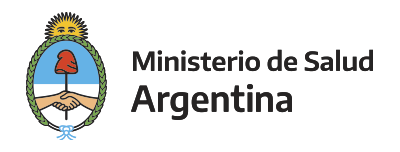Please use this identifier to cite or link to this item:
http://sgc.anlis.gob.ar/handle/123456789/2659| DC Field | Value | Language |
|---|---|---|
| dc.contributor.author | Vargas, Paola | es |
| dc.contributor.author | Krolewiecki, Alejandro J. | es |
| dc.contributor.author | Echazú, Adriana | es |
| dc.contributor.author | Juarez, Marisa | es |
| dc.contributor.author | Cajal, Pamela S. | es |
| dc.contributor.author | Gil, José Fernando | es |
| dc.contributor.author | Caro, Nicolas | es |
| dc.contributor.author | Nasser, Julio R. | es |
| dc.contributor.author | Lammie, Patrick | es |
| dc.contributor.author | Cimino, Rubén Oscar | es |
| dc.date.accessioned | 2025-08-07T16:59:34Z | - |
| dc.date.available | 2025-08-07T16:59:34Z | - |
| dc.date.issued | 2017-04-10 | - |
| dc.identifier.uri | http://sgc.anlis.gob.ar/handle/123456789/2659 | - |
| dc.description.abstract | Northwestern Argentina is endemic for soil-transmitted helminths, and annual deworming programs are carried out in prioritized areas. High prevalence of Strongyloides stercoralis was reported in this area; therefore, control programs including ivermectin are being evaluated. The NIE-enzyme linked immunosorbent assay (ELISA) was used for this purpose. In this community trial, two groups of patients, classified according to housing and living conditions were evaluated. Simultaneous with baseline survey, Group 1 was moved to new households with access to improved water and sanitation facilities (W and S), where deworming (MDA, massive drug administration) took place within 1 month; whereas Group 2 received MDA but remained living with unimproved W and S. The mean time interval between baseline and the follow-up was 331 days for Group 1 and 508 for Group 2. Anti-NIE levels were measured for each individual before and after interventions and follow-up optical density (OD) ratios were calculated to quantify the variation. A significant decrease of the anti-NIE levels between baseline and follow-up was observed in both groups. Nonetheless, the number of patients that achieved the cure criteria (OD ratio < 0.6) was higher in Group 1 than Group 2 with values of 72.7% (24/33) and 45.0% (18/40), respectively (P = 0.0197). Our results support the conclusion that a combined intervention including deworming and improvements in life conditions is more effective, in terms of the proportion of subjects cured than deworming alone. Furthermore, we found that NIE-ELISA is a useful test for assessing the response to treatment and to evaluate the outcome of control intervention programs. | es |
| dc.language.iso | en_US | es |
| dc.publisher | The American Society of Tropical Medicine and Hygiene | es |
| dc.relation.ispartof | Am. J. Trop. Med. Hyg., 97(1), 2017, pp. 166–172 | es |
| dc.title | Serologic Monitoring of Public Health Interventions against Strongyloides stercoralis | es |
| dc.type | Artículo | es |
| dc.identifier.doi | 10.4269/ajtmh.16-0857 | - |
| item.grantfulltext | open | - |
| item.fulltext | With Fulltext | - |
| item.openairetype | Artículo | - |
| item.openairecristype | http://purl.org/coar/resource_type/c_18cf | - |
| item.languageiso639-1 | en_US | - |
| item.cerifentitytype | Publications | - |
| Appears in Collections: | Parasitosis intestinales en Argentina | |
Files in This Item:
| File | Description | Size | Format | |
|---|---|---|---|---|
| 06. Am. J. Trop. Med. Hyg., 97(1), 2017, pp. 166–172.pdf | 326.8 kB | Adobe PDF | View/Open |
Page view(s)
72
checked on Dec 13, 2025
Download(s)
4
checked on Dec 13, 2025
Google ScholarTM
Check
Altmetric
Altmetric
Items in DSpace are protected by copyright, with all rights reserved, unless otherwise indicated.

